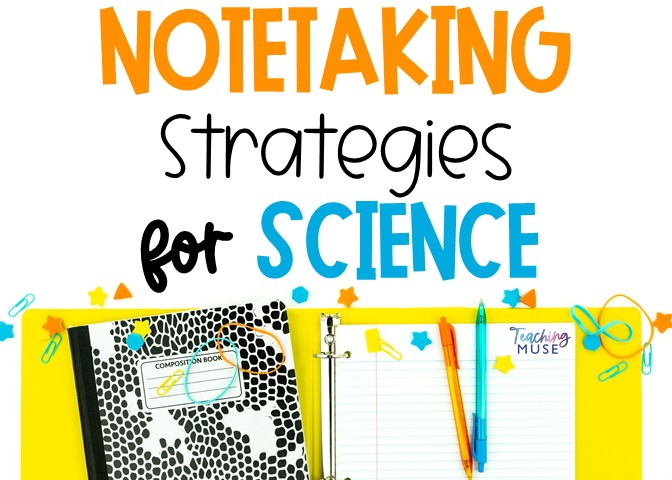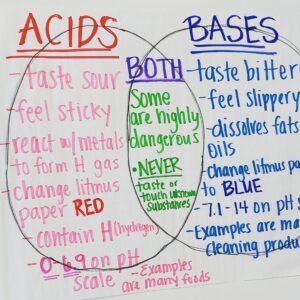
Are you teaching your students difficult science concepts and wondering the best method to help them take notes to retain the information? Let’s talk about 7 science notetaking strategies you can use to help your students become better note-takers in science class.
7 of the Best Note-taking Methods for Science Class
Sketch notes are a great resource to use in your classroom because it combines written notes with sketches or doodles. For visual learners, including illustrations and visuals in their note-taking will engage them to want to take more notes, but since both sides of their brains are being used, they are more likely to retain scientific concepts.
You can use this science notetaking strategy in your classroom by providing students with already made note sheets that they can color or have students create their own images next to their text. For students who are not confident with their ability to draw, I have had better luck providing them with the sheets they need.
You can read about how I implement this strategy in my classroom here.
Fill in the Blank Science Notetaking Strategy
Using the fill-in-the-blank method works well for students to quickly jot in important science words while the teacher explains the concept to the class.
This method works well when you want your class to have important information that they’ll need to understand scientific concepts but do not want to waste a lot of class time having students take notes. It saves the teacher and students time. Students will appreciate this method because the emphasis is not on writing but on truly jotting down notes to focus on the lecture to help understand the science concept.
Concept Maps
Concept maps are a strategy used in science to brainstorm information about a topic or review what was learned about a topic.
Start with the most general term in the middle and place a circle around it. Students can personalize their learning by creating their own map with related science concepts or giving students a partial concept map that they can fill in to have a reference sheet to use while working on the science topic.
Graphic Organizers
Use graphic organizers to have students take notes in a structured format. For example, graphic organizers can help students compare and contrast science concepts, determine cause and effect, make predictions, classify information, or sequence how things happen.
Graphic organizers allow students to take notes on important information. This is another science strategy that allows students to focus on the concept rather than the laborious task of notetaking.
Guided Science Notetaking Stategy
This science notetaking strategy is similar to the fill-in-the-blank method, but students include more information than important terms. For example, the teacher may give students a topic and then include a summary or multi-step process to clarify the topic.
This step may look more like an outline that has students fill in information that will help them learn more about the topic. I like using this method to have students remember the steps to finding the density of an object or explain the process of neutralization. The strategy should not be laborious when writing. Students can include arrows, numbers, or small sketches, but it will have students write out more information to internalize the science topic better.
Mini Anchor Charts
Often teachers create anchor charts to hang in their classroom to refer back to these charts as they are working independently or in small groups on a topic. Anchor charts are usually completed as a class to review and reinforce what students know about a concept.
In the future, when completing the anchor chart with your students, provide them with a skeleton version of the chart that they can fill in their version to have as a reference in their science notebooks. This science notetaking strategy will allow them to have the important information they need with them at all times.

Play Games
Sometimes instead of having students take notes, have them play a game instead. Students love games so turning concepts and important vocabulary terms into a game instead of a class notetaking activity will engage them. Or have students complete the science notetaking assignment for homework based on what they learned from playing the game in class.
Games can include:
By helping students improve their notetaking skills, they will become better students. Using the strategies above can help students better understand scientific topics and become better learners. Choose to implement one or more strategies into your classroom and let me know how it works.
If you are interested in trying out the sketch note strategy, grab your free set of sketch notes to use with lunar phases below!







